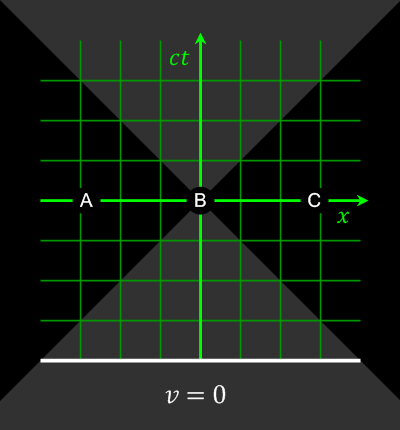Answer: it can give some qualitative intuition on what is larger/smaller happens before/after based only on arguably more intuitive geometric considerations, without requiring you to do any calculations, see e.g. Figure "Spacetime diagram illustrating how faster-than-light travel implies time travel".
The key insights that it gives are:
- future and past are well defined: every reference frame sees your future in your future cone, and your past in your past coneOtherwise causality could be violated, and then things would go really bad, you could tell your past self to tell your past self to tell your past self to do something.
- every other event (to right and left, known as spacelike-separated events) can be measured to happen before or after your current spacetime event by different observers.
Animation showing how space-separated events can be observed to happen in different orders by observers in different frames of reference
. Source. The opposite of spacelike-separated events.
Mathematically, we can decide if two events are timelike-separated or spacelike-separated by just looking at the sign of the spacetime interval between them.
On the light cone, these are events on the left/right part of the cone.
Different observers might not agree on the order of two spacelike-separated events.
Further discussion at Section "Light cone".
The opposite of those events are timelike-separated events.

